Mohamad Alissa
Evaluating the Robustness of Deep-Learning Algorithm-Selection Models by Evolving Adversarial Instances
Jun 24, 2024



Abstract:Deep neural networks (DNN) are increasingly being used to perform algorithm-selection in combinatorial optimisation domains, particularly as they accommodate input representations which avoid designing and calculating features. Mounting evidence from domains that use images as input shows that deep convolutional networks are vulnerable to adversarial samples, in which a small perturbation of an instance can cause the DNN to misclassify. However, it remains unknown as to whether deep recurrent networks (DRN) which have recently been shown promise as algorithm-selectors in the bin-packing domain are equally vulnerable. We use an evolutionary algorithm (EA) to find perturbations of instances from two existing benchmarks for online bin packing that cause trained DRNs to misclassify: adversarial samples are successfully generated from up to 56% of the original instances depending on the dataset. Analysis of the new misclassified instances sheds light on the `fragility' of some training instances, i.e. instances where it is trivial to find a small perturbation that results in a misclassification and the factors that influence this. Finally, the method generates a large number of new instances misclassified with a wide variation in confidence, providing a rich new source of training data to create more robust models.
Automated Algorithm Selection: from Feature-Based to Feature-Free Approaches
Mar 24, 2022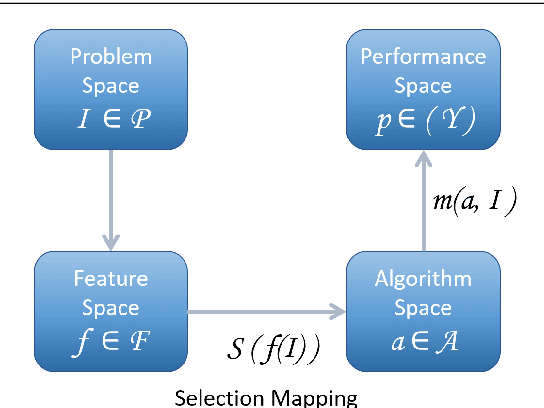



Abstract:We propose a novel technique for algorithm-selection, applicable to optimisation domains in which there is implicit sequential information encapsulated in the data, e.g., in online bin-packing. Specifically we train two types of recurrent neural networks to predict a packing heuristic in online bin-packing, selecting from four well-known heuristics. As input, the RNN methods only use the sequence of item-sizes. This contrasts to typical approaches to algorithm-selection which require a model to be trained using domain-specific instance features that need to be first derived from the input data. The RNN approaches are shown to be capable of achieving within 5% of the oracle performance on between 80.88% to 97.63% of the instances, depending on the dataset. They are also shown to outperform classical machine learning models trained using derived features. Finally, we hypothesise that the proposed methods perform well when the instances exhibit some implicit structure that results in discriminatory performance with respect to a set of heuristics. We test this hypothesis by generating fourteen new datasets with increasing levels of structure, and show that there is a critical threshold of structure required before algorithm-selection delivers benefit.
Parkinson's Disease Diagnosis Using Deep Learning
Jan 03, 2021
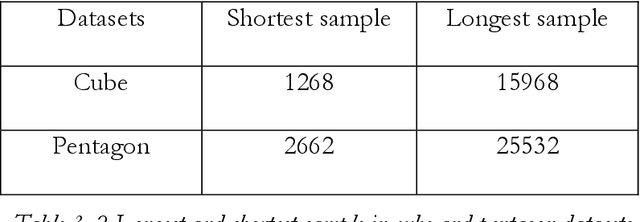
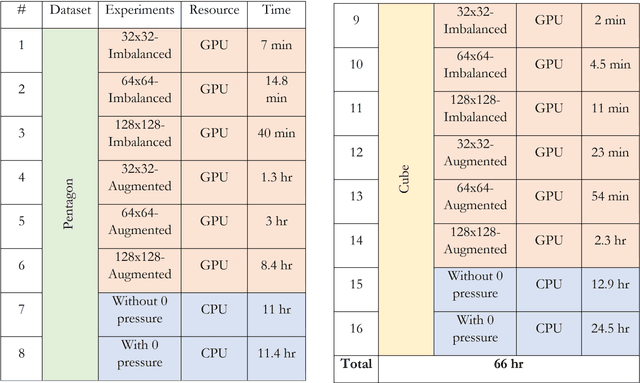
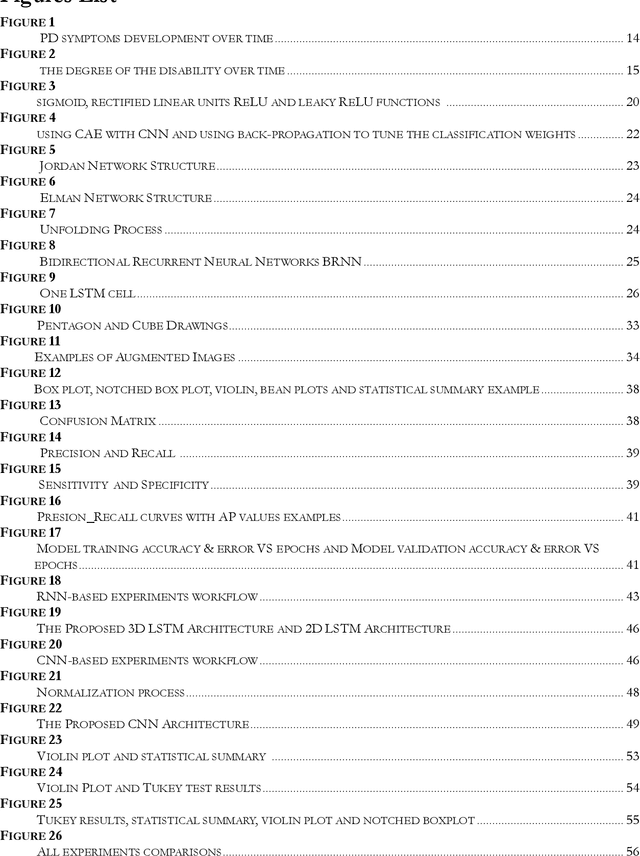
Abstract:Parkinson's Disease (PD) is a chronic, degenerative disorder which leads to a range of motor and cognitive symptoms. PD diagnosis is a challenging task since its symptoms are very similar to other diseases such as normal ageing and essential tremor. Much research has been applied to diagnosing this disease. This project aims to automate the PD diagnosis process using deep learning, Recursive Neural Networks (RNN) and Convolutional Neural Networks (CNN), to differentiate between healthy and PD patients. Besides that, since different datasets may capture different aspects of this disease, this project aims to explore which PD test is more effective in the discrimination process by analysing different imaging and movement datasets (notably cube and spiral pentagon datasets). In addition, this project evaluates which dataset type, imaging or time series, is more effective in diagnosing PD.
Sentiment Analysis for Open Domain Conversational Agent
Jan 03, 2021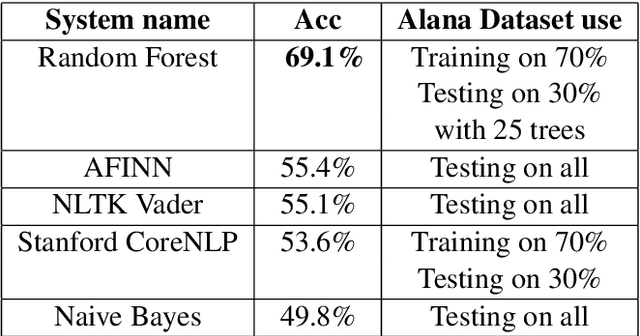
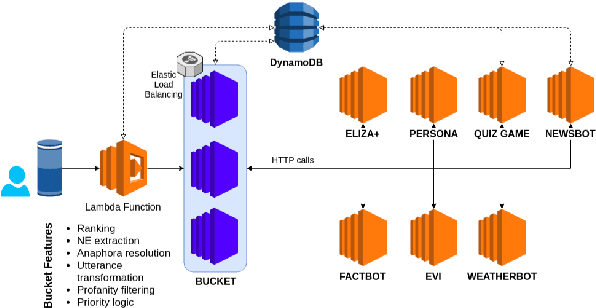
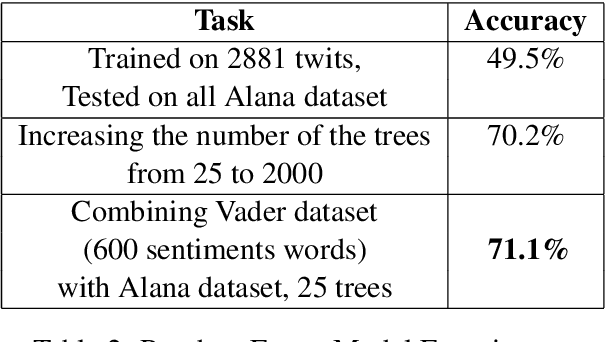
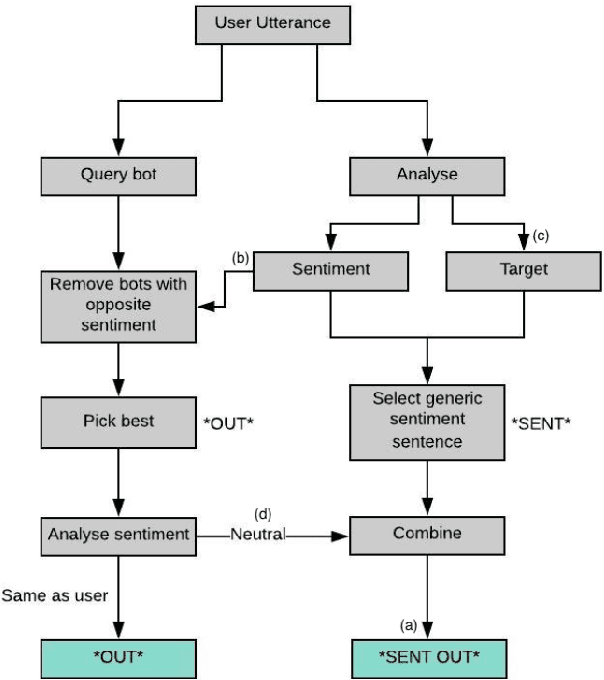
Abstract:The applicability of common sentiment analysis models to open domain human robot interaction is investigated within this paper. The models are used on a dataset specific to user interaction with the Alana system (a Alexa prize system) in order to determine which would be more appropriate for the task of identifying sentiment when a user interacts with a non-human driven socialbot. With the identification of a model, various improvements are attempted and detailed prior to integration into the Alana system. The study showed that a Random Forest Model with 25 trees trained on the dataset specific to user interaction with the Alana system combined with the dataset present in NLTK Vader outperforms other models. The new system (called 'Rob') matches it's output utterance sentiment with the user's utterance sentiment. This method is expected to improve user experience because it builds upon the overall sentiment detection which makes it seem that new system sympathises with user feelings. Furthermore, the results obtained from the user feedback confirms our expectation.
 Add to Chrome
Add to Chrome Add to Firefox
Add to Firefox Add to Edge
Add to Edge